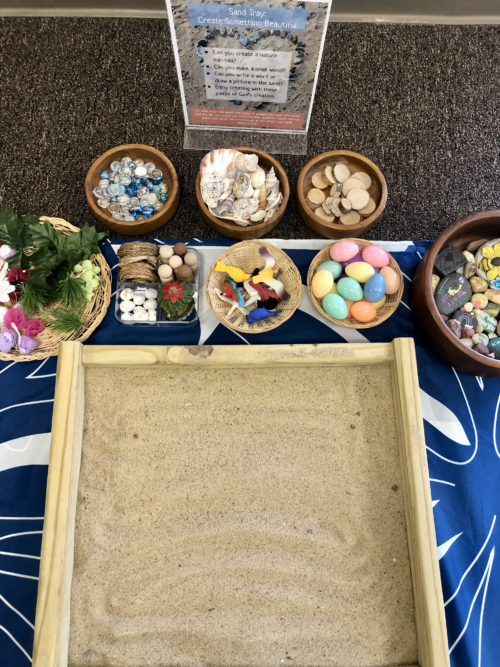Bible Memory as Spiritual Practice
A familiar psalm or scripture passage can bring comfort during times of trouble and give voice to our praise in times of joy—a true gift. At Shine, we want to give that same gift to children and youth through the spiritual practice of committing scripture to memory. With fun and engaging activities, teachers can sow seeds that grow into a lifelong love of scripture. We choose Bible memory passages that connect to the quarter’s stories and with children and youth. Here are some strategies for making Bible memory fun and meaningful for your group.
Wake up your brain! Recent brain research shows how we can improve learning by “waking up the brain.” Deep breathing delivers fresh oxygen to the brain. Make breathing deeply a ritual as you transition from the session’s prayer activity to Bible memory. Problem solving or learning something new stimulates the brain. Provide background information on the passage, ask open-ended questions, and use a variety of puzzles to engage children and youth. When one side of the body crosses its midline, both hemispheres of the brain are engaged, which stimulates a person’s memory. Get everyone up and moving as you repeat the Bible memory passage together.
Use your senses! Use sight, sound, touch, smell, and taste to create a context for learning. Use actions to heighten sensory involvement and help stimulate the brain to make connections between the biblical story, the learners’ own life situations, and the scripture to be memorized. For example, play music as you repeat words, role-play with costumes, clap hands or snap fingers in rhythm, create crafts, and do other hands-on activities that literally help learners get in touch with the text.
Have fun! Emotions are a filter through which our brains receive information. Nearly every memory relates to a positive or negative emotion. Bible memory can be connected with positive emotions. Design experiences that are interactive, affirming, and fun. Offer memory activities that use a variety of sensory experiences and learning preferences. Encourage freedom of personal expression as students ponder the biblical story and the scripture to be memorized. Laughter helps!
Words to Live By is the Bible memory equivalent for junior youth, reflecting an emphasis on helping youth apply the scripture text to daily life. While not found in every session, Words to Live By is included as an Explore option at least three times in the sub-unit where the text is used. You may notice that some “Words to Live By” texts are longer, allowing youth to see its larger context. The focus in Junior Youth is less on rote memorization activities and more on ways to connect the text to the youth’s own experiences.
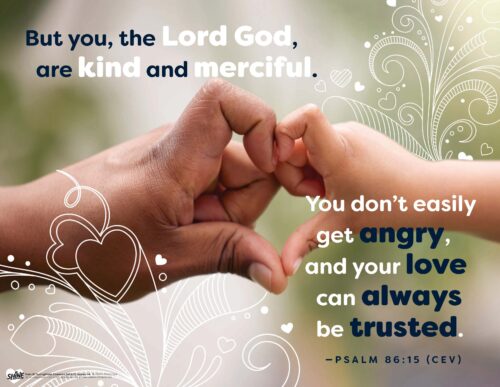 Don’t forget the posters! Each teaching kit (print and digital) includes two full-color scripture teaching posters for use during the session. Some activities will have children and youth interact with the text on the poster, while others will simply reference the poster as a visual reminder of the passage. (Those using the digital kit can show the poster using a laptop, tablet, or other electronic device.) We are grateful to have graphic designers whose creative and beautiful work inspires a love of scripture in all of us.
Don’t forget the posters! Each teaching kit (print and digital) includes two full-color scripture teaching posters for use during the session. Some activities will have children and youth interact with the text on the poster, while others will simply reference the poster as a visual reminder of the passage. (Those using the digital kit can show the poster using a laptop, tablet, or other electronic device.) We are grateful to have graphic designers whose creative and beautiful work inspires a love of scripture in all of us.
More memory tips:
- Create motions to go with the words.
- Have children illustrate key words. Use the illustrations as memory aids.
- Print words or phrases on index cards or strips of poster board. Hide them around the room. Have learners find them and place them in the correct order.
- Repeat the memory text often. Vary when you do this during the session. Do it for gathering, during snack time, or at the end of the session.
- Make sure children and youth understand the words. Talk about the meaning of the text and why it is a good one to commit to memory.
Next week, we’ll share some favorite spiritual practices from the Shine archives. Do you have a spiritual practice activity that has been especially meaningful for you or your group? Tips to share? Send them to blog@ShineCurriculum.com by Monday, October 30, and we’ll try to include them. Feel free to send a picture too!


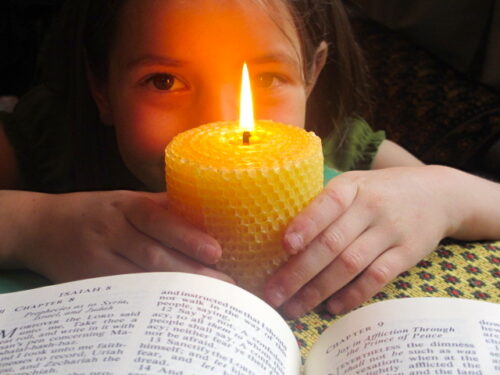 Each Shine session has a spiritual practice to share with your group during Connect to God (Sing and Pray in PreK–Kindergarten). These spiritual practices may include music, movement, writing prompts, moments of silence, or an object to help children focus. Student resources reinforce these practices, inviting children and youth to make them a part of their daily lives. Here are 10 tips to help you guide your group in the spiritual practice each week.
Each Shine session has a spiritual practice to share with your group during Connect to God (Sing and Pray in PreK–Kindergarten). These spiritual practices may include music, movement, writing prompts, moments of silence, or an object to help children focus. Student resources reinforce these practices, inviting children and youth to make them a part of their daily lives. Here are 10 tips to help you guide your group in the spiritual practice each week.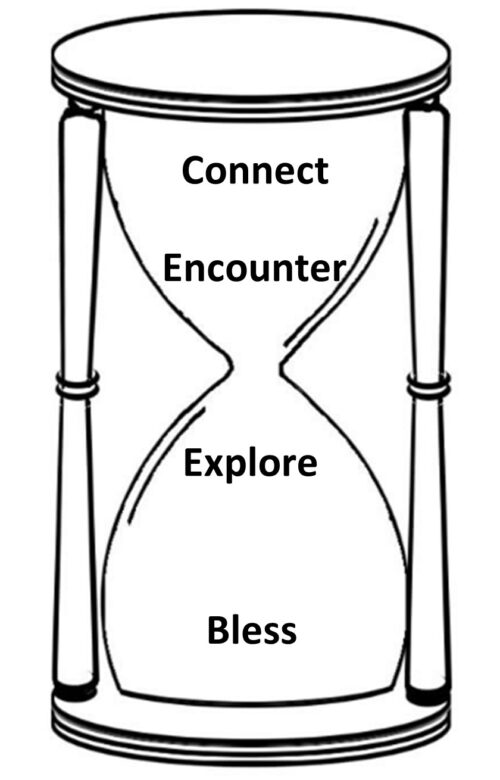 So is the flow of a Shine session.
So is the flow of a Shine session.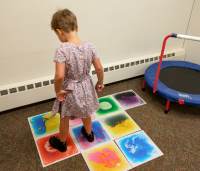 A number of children in our congregation are neurodivergent, which means having developmental or neurological function that differs from what is considered “typical.” In our church, this includes diagnoses like ADHD and autism. Recognizing that the systems and structures within a place are what disable people and are barriers to their full participation, we wanted more support to be able to build community with children of a variety of abilities and brains. We first reached out to the
A number of children in our congregation are neurodivergent, which means having developmental or neurological function that differs from what is considered “typical.” In our church, this includes diagnoses like ADHD and autism. Recognizing that the systems and structures within a place are what disable people and are barriers to their full participation, we wanted more support to be able to build community with children of a variety of abilities and brains. We first reached out to the 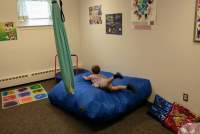
 Jennifer Svetlik (she/her) directs Children’s Faith Formation and Justice Initiatives at Salford Mennonite Church (Harleysville, PA). She has a master’s in theology from Washington Theological Seminary. She and her partner Sheldon Good are parents to two awesome elementary-aged kids, including a neurodivergent third grader.
Jennifer Svetlik (she/her) directs Children’s Faith Formation and Justice Initiatives at Salford Mennonite Church (Harleysville, PA). She has a master’s in theology from Washington Theological Seminary. She and her partner Sheldon Good are parents to two awesome elementary-aged kids, including a neurodivergent third grader. 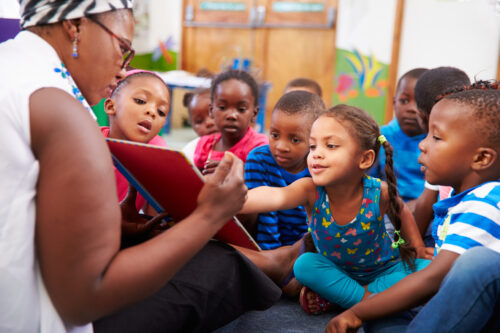 n and youth learn best when they are with adults who genuinely like them. They are observing and learning from you—even if it doesn’t always seem like it! They are affected by the way you pray and the enthusiasm you show as you tell a story, sing a song, or lead a game. When you talk about your favorite Bible story or name things that you’re grateful for, you are modeling this for the children. When you smile and say something kind, this conveys acceptance and the love of God.
n and youth learn best when they are with adults who genuinely like them. They are observing and learning from you—even if it doesn’t always seem like it! They are affected by the way you pray and the enthusiasm you show as you tell a story, sing a song, or lead a game. When you talk about your favorite Bible story or name things that you’re grateful for, you are modeling this for the children. When you smile and say something kind, this conveys acceptance and the love of God.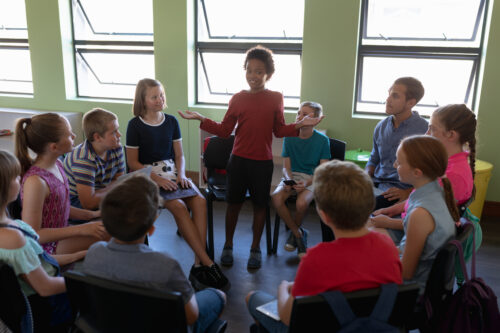 Each person in the group can serve as a leader, even in simple ways. They can help prepare the room, set up chairs, and distribute supplies. Each person’s contribution demonstrates care for the other people in the group and helps create a positive space for worship and learning. Children and youth can also lead prayers, songs (including with instruments), and readings. Children of all ages want to know they have a place and that their participation and their leadership is valued and desired.
Each person in the group can serve as a leader, even in simple ways. They can help prepare the room, set up chairs, and distribute supplies. Each person’s contribution demonstrates care for the other people in the group and helps create a positive space for worship and learning. Children and youth can also lead prayers, songs (including with instruments), and readings. Children of all ages want to know they have a place and that their participation and their leadership is valued and desired. Our last cycle of Shine curriculum launched during the pandemic when many churches and Sunday schools were not meeting. Fall 2023 is a bit of a re-launch! You’ll find all the things you love about Shine: well-crafted retellings of the Bible story, wondering questions, spiritual practices, and fun activities to round out the sessions. But there is a whole new look and new products!
Our last cycle of Shine curriculum launched during the pandemic when many churches and Sunday schools were not meeting. Fall 2023 is a bit of a re-launch! You’ll find all the things you love about Shine: well-crafted retellings of the Bible story, wondering questions, spiritual practices, and fun activities to round out the sessions. But there is a whole new look and new products! If you are new to Shine curriculum or need a refresher, there are new overview videos for each age level of the curriculum. These brief videos will take you through the session plan and all the products you need for teaching. You can find these videos on the
If you are new to Shine curriculum or need a refresher, there are new overview videos for each age level of the curriculum. These brief videos will take you through the session plan and all the products you need for teaching. You can find these videos on the  A biblical understanding of peacemaking involves wholeness: right relationships with God, self, others and all of creation. The Peace Table includes 12 Peace Paths to help children and families explore various aspects of peace throughout the biblical story. Each path has 5 stories, some from both the Old and New Testaments. Choose a path, such as “Family Problems,” “God Is Amazing,” “Nature Trail,” or “I Need Comfort.” Read the first story, respond to the prompt, then turn to the indicated page number to find the next story in the path.
A biblical understanding of peacemaking involves wholeness: right relationships with God, self, others and all of creation. The Peace Table includes 12 Peace Paths to help children and families explore various aspects of peace throughout the biblical story. Each path has 5 stories, some from both the Old and New Testaments. Choose a path, such as “Family Problems,” “God Is Amazing,” “Nature Trail,” or “I Need Comfort.” Read the first story, respond to the prompt, then turn to the indicated page number to find the next story in the path.

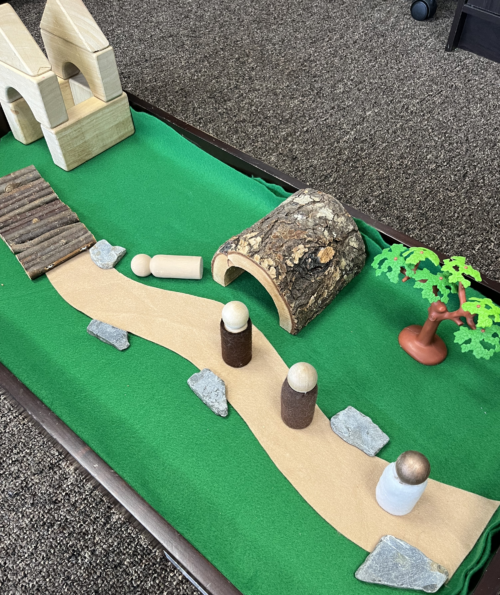 Story pieces
Story pieces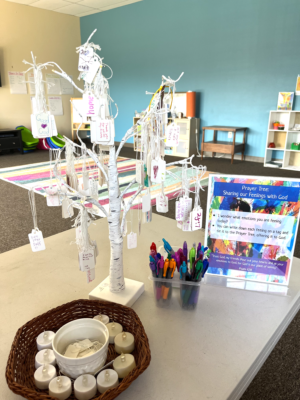 Prayer Tree
Prayer Tree